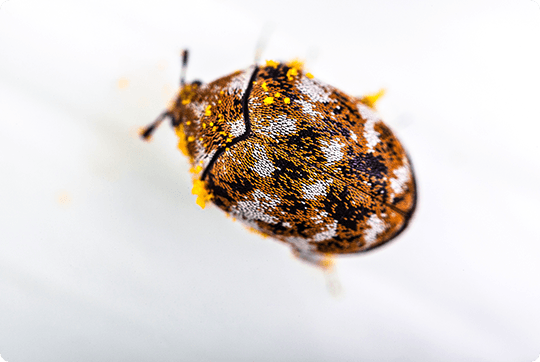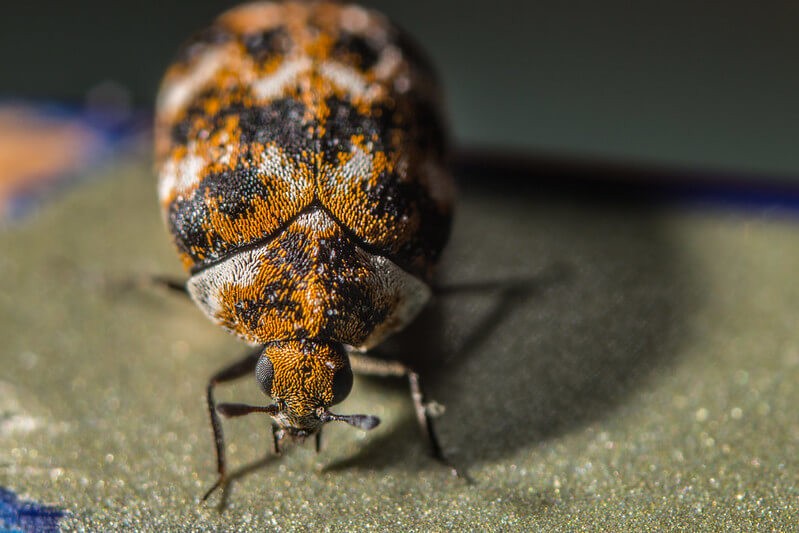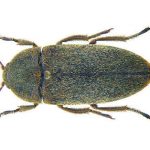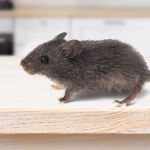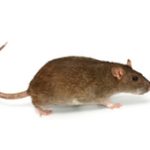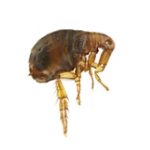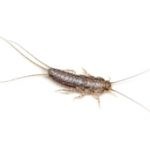Carpet beetle life cycle: Stages, lifespan and how to spot them
Like many household pests, carpet beetles go through several stages during their life cycle, from egg to larva, pupa, and adult beetles. Each phase brings specific behaviours and characteristics that distinguish them from other insects and determine how they spread and cause damage to your home.
Understanding carpet beetle life cycle stages is essential if you want to identify and tackle an infestation before it becomes widespread. When you can recognise these pests at each stage, especially during the larval feeding period, you’re far better equipped to disrupt their cycle and prevent long-term damage to your textiles, carpets, and upholstery.
Carpet beetle eggs: Where they’re laid and how to identify them
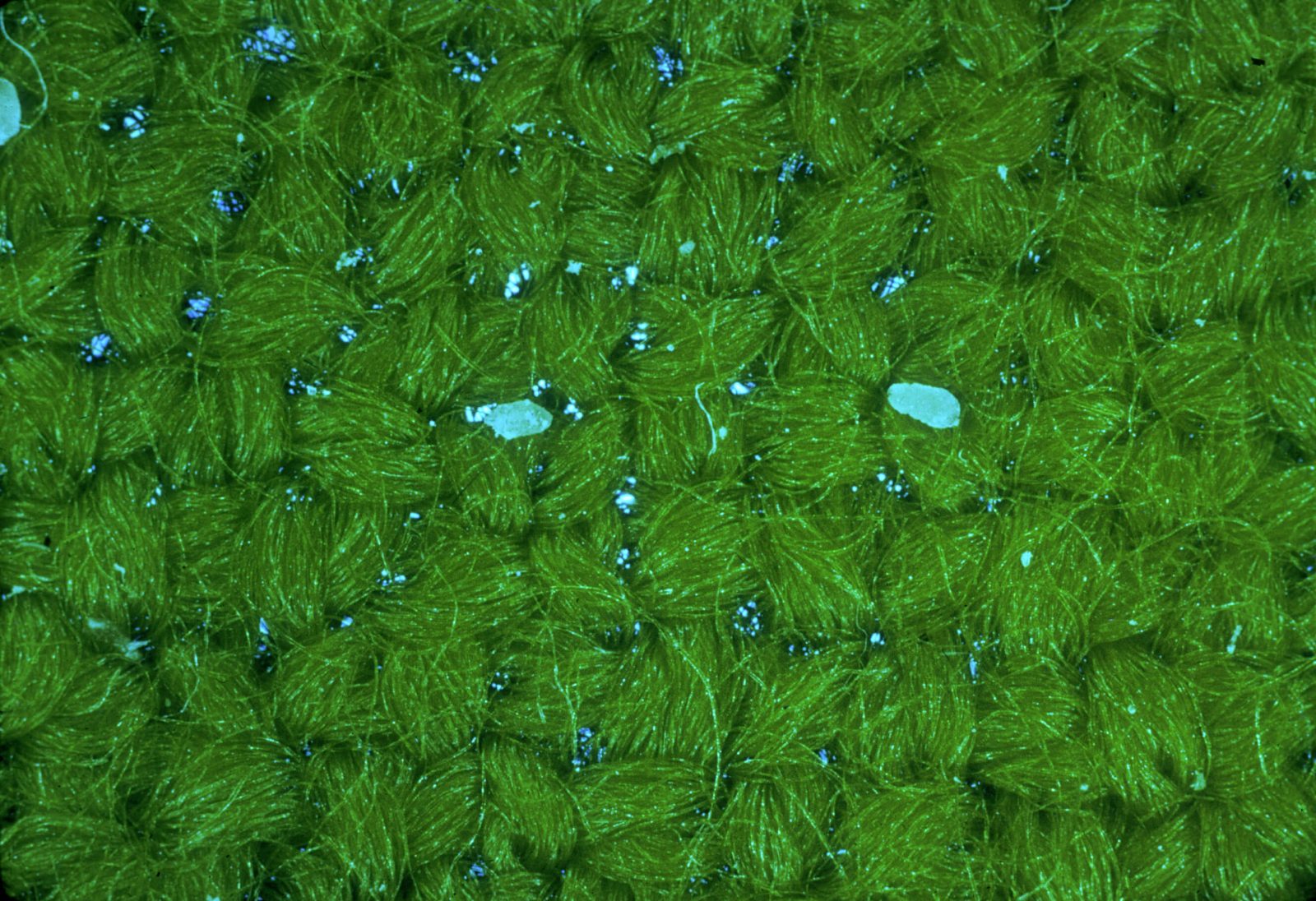
Like most insects, the carpet beetle’s life cycle begins at the egg stage. These tiny, oval-shaped eggs are typically laid indoors, often in hidden or undisturbed areas. However, they can also be found outside, especially in rodent or bird nests, where the conditions offer both shelter and access to natural fibres.
A light source is one key trigger for egg-laying, with adult females capable of laying over 100 eggs at once if the environment is right.
Carpet beetle eggs are small, usually around 0.5mm long, white and oval in shape. One of their distinguishing features is a series of ridge-like lines which resemble a tiny backbone, distinguishing them from other insect eggs. Due to their size and neutral colouring, they are often difficult to detect, especially when laid among fibres or in dusty areas.
You might find carpet beetle eggs around:
- Woolen carpets and rugs;
- Upholstered furniture;
- Wardrobes and fabric storage boxes;
- Closets and drawers;
- Pigeon nests or attic spaces.
Under favourable conditions, the eggs hatch within 7 to 35 days, depending on temperature and humidity. Once hatched, they enter the larval stage, where the real damage begins.
Image by: CSIRO / License: BY 3.0
Carpet beetle larvae: Appearance, habits, and damage risks

After hatching, carpet beetles enter the larval stage, the most destructive phase in the carpet beetle’s life cycle. Carpet beetle larvae can grow up to 6mm (0.6cm) and are usually oval-shaped. Their appearance varies depending on species, but they all share a common trait: they feed aggressively on natural materials rich in animal protein.
Here’s how to identify the most common carpet beetle types:
- Varied carpet beetle larvae: Dark brown with light stripes and covered in short bristles, giving them a fuzzy appearance.
- Black carpet beetle larvae: Range from brown to deep black and have a smooth body with no bristles.
- Furniture carpet beetle larvae: Start white but darken to reddish-brown as they grow, with faint brown stripes across their bodies.
Where do carpet beetle larvae live?
Indoors, larvae prefer quiet, undisturbed areas to feed on:
- Dead skin cells, hair, pet dander, and lint
- Feathers, wool, fur, and silk
- Leather-bound books, wool carpets, and stuffed animals
Outdoors, they can survive in bird nests, rodent nests, or other natural locations where organic debris provides a steady food supply.
While carpet beetle larvae don’t bite or spread disease, they may cause skin irritation in some people, particularly due to the bristles of certain species. This can sometimes be mistaken for a mild allergic reaction.
Tip: Finding shed skins or larvae in dark corners, wardrobes, or under furniture is often the first sign of a hidden infestation.
Image by: Pascal / License: ZERO 1.0
Pupal stage: How carpet beetles transition to adulthood
After the larval stage, carpet beetles enter the pupal stage, a short but critical phase in their development cycle. This transformation period typically lasts between two and three weeks, depending heavily on temperature and environmental conditions.
During this stage, the larva forms a cocoon-like case, usually white or pale in colour, where it undergoes metamorphosis. While technically inactive, this is when the insect begins to transform into a fully formed adult beetle. The pupal stage usually takes place near the original larval feeding site, for example, in carpets, underneath furniture, or inside fabric storage boxes.
Adult carpet beetles typically emerge from their cocoons during spring and summer, when indoor temperatures are warmer and the humidity is high. This is why carpet beetles are most active during spring and summer, when indoor heating and longer daylight hours speed their development. So if you’re wondering “What time of the year are carpet beetles most active?”, it’s during the warm season when they breed, fly, and spread most aggressively.
As cold-blooded insects, carpet beetles are vulnerable to freezing temperatures. In unheated or exposed environments, particularly outdoors, freezing conditions can kill carpet beetles before they reach adulthood. However, in centrally heated homes, they continue to thrive year-round.
Adult carpet beetles: Appearance, behaviour and risks
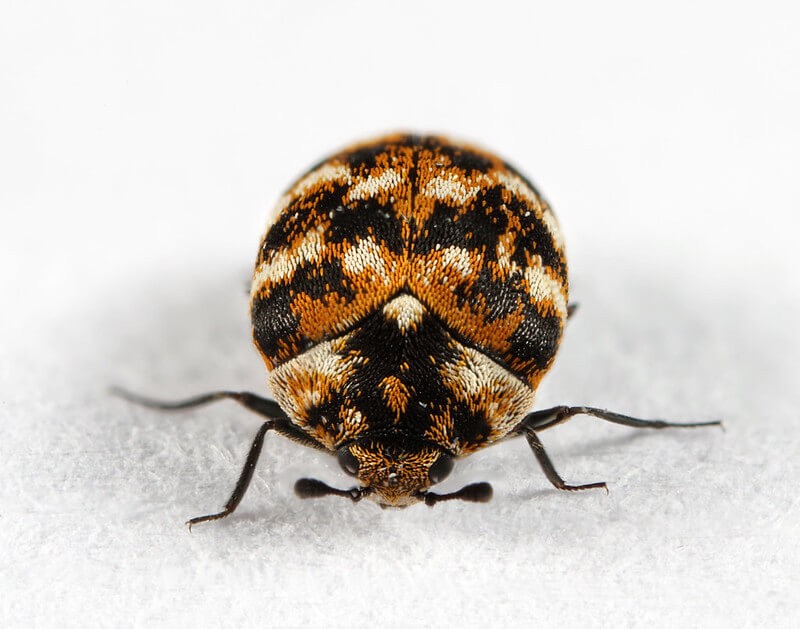
Once the pupal stage is complete, the insect emerges as an adult carpet beetle – the final phase of the carpet beetle’s life cycle. Adults typically live for one to three months, during which time they focus on breeding and laying eggs, rather than feeding on household items.
While the entire carpet beetle life cycle may last up to two years, the adult stage lasts just one to three months, with most of their energy spent on mating and egg-laying. Many people ask, “How long do carpet beetles stay around?” The answer depends on the temperature, available food sources, and whether the infestation is treated. If left alone, multiple generations can cycle through your home continuously.
Although the full development cycle, from egg to adult, may take up to two years depending on environmental conditions, adult beetles themselves survive only a few months. Compared to the larval stage, adult beetles are less harmful, as they do not feed on textiles or organic household materials.
Instead, adult carpet beetles feed on flower pollen and nectar, and they may even contribute to pollination in the wild. However, they can still become a nuisance in homes as they fly indoors through open windows or doors and may lay eggs in hidden or soft-furnished areas.
What do adult carpet beetles look like?
Adult carpet beetles typically measure 2-4mm in length and are oval in shape. Their appearance varies by species:
- Furniture carpet beetles are black with small yellowish spots
- Common carpet beetles have a pattern of black, white and yellow scales
- Black carpet beetles are deep brown to nearly black and have a smooth, shiny surface
Indoors, adult beetles often hide in dark corners, behind furniture, in wardrobes, or non- non-synthetic clothing. If undetected, they can continue the infestation cycle by laying eggs in fibres, leading to new generations of damaging larvae. Adult carpet beetles are also strong fliers, and spotting them near windows or light sources in the spring and summer may be the first sign of a hidden infestation.
Check also: Bugs that Look Like Bed Bugs
Image by: AJC1 / License: CC BY-SA 2.0
Conclusion: Stop the carpet beetle’s life cycle before it spreads
Carpet beetles can remain undetected for weeks or even months due to the tiny size of their eggs, larvae, and pupae. Most homeowners only notice the problem once adult beetles appear, often flying near light sources or crawling along windowsills and furniture.
However, it’s important to remember that the real damage comes from the larvae, not the adults. Carpet beetle larvae feed on natural fibres like wool, leather, feathers, and other non-synthetic materials, often causing damage mistakenly blamed on moths.
If left untreated, the carpet beetle’s life cycle continues, allowing new generations of larvae to hatch and spread. That’s why early detection and targeted action are key.
The most effective way to eliminate a carpet beetle infestation is to break the life cycle. This often means turning to professional help.
Whether you’re already seeing signs of damage or want to prevent future outbreaks, consider booking a carpet beetle pest control service. Specialists are trained to locate breeding sites, apply safe and effective treatments, and ensure your home stays protected year-round.
Still not sure if you have carpet beetle infestation?
Note that we only aim to provide some useful information about how to identify carpet beetles in each stage of their life. We cannot guarantee that you are not infested by other beetle.



